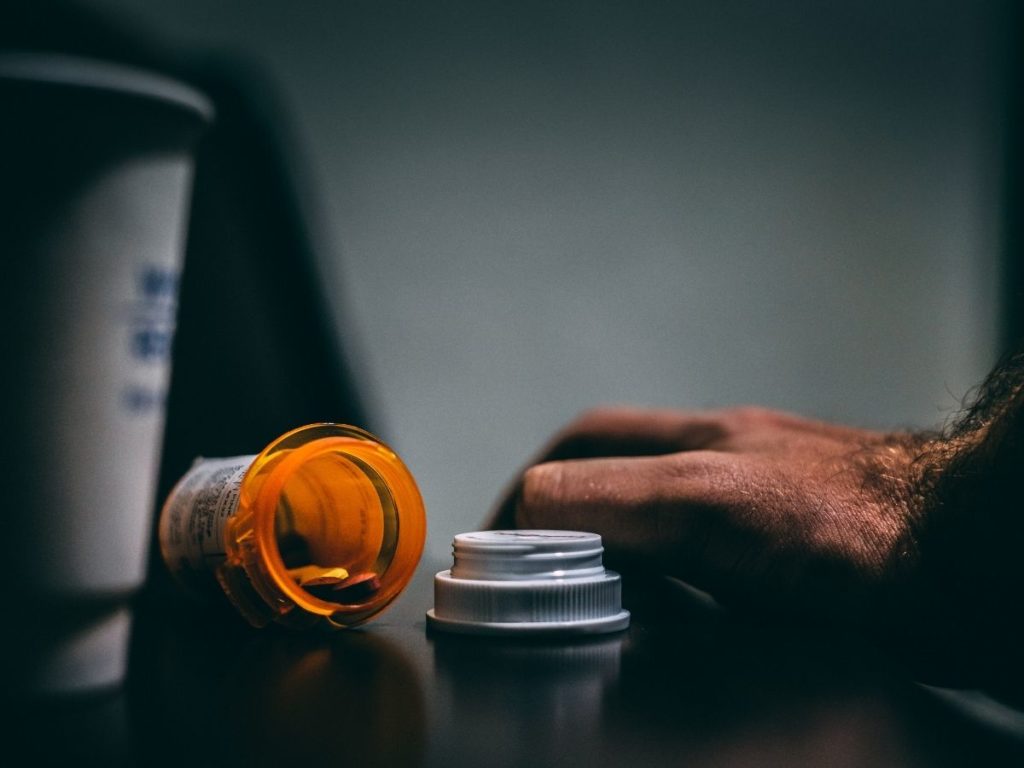Understanding Valium Addiction
Valium is an addictive Benzodiazepine with longer-lasting effects than other drugs in its class. Diazepam (Valium) addiction can progress quickly if the drug is used in a way not directed by a doctor. Over time, it is harder for a Valium abuser’s brain to function normally without the drug. Yet some people addicted to Valium may not even realize they have a problem.
Taking Valium for longer than 4-6 weeks, even with a prescription from a doctor, increases the likelihood of becoming addicted. One of the telltale symptoms of a Diazepam (Valium) addiction is needing larger doses to feel the drug’s effects. Other signs of Diazepam (Valium) addiction include:

- Strong cravings for the drug
- Isolation from family and friends
- Continued use despite problems caused by the drug
- Loss of interest in once enjoyable activities
- Ignoring obligations
Once a user has a tolerance to Valium’s effects, they could also have Valium withdrawals symptoms if they stop taking it. Valium withdrawals can be dangerous and uncomfortable, which makes it hard for addicted people to quit on their own. The symptoms of Valium withdrawals are intense, and many people addicted to Valium need the drug to feel normal. About 1-4 days following a person’s last use of Valium, the individual will begin to experience the effects of acute Valium withdrawals.
What Is Valium (Diazepam)?
Valium is most often prescribed to relieve anxiety, muscle spasms, and seizures. It is also used to ease uncomfortable symptoms of alcohol withdrawal. Valium works by diminishing hyperactive brain function to relieve severe stress and anxiety. It is ingested orally in pill form and usually taken 1-4 times per day when prescribed by a doctor. Valium is a long-acting Benzodiazepine.
This means it stays in the body much longer than shorter-acting Benzos like Halcion. Because of Valium’s long-lasting nature, people can take fewer doses per day than they would with shorter-acting Benzos. Valium is meant to be taken regularly to be effective. But when someone starts taking Valium more than prescribed, or without a prescription, they increase their risk of becoming addicted.
Physical Dependence and Valium Withdrawals
Physical dependence refers to a condition that occurs with many drugs, consisting of tolerance to the drug and withdrawal symptoms when going without it. Simply stated, tolerance occurs when a person requires a higher dosage or more of a drug to achieve the same effects, therapeutic or otherwise, that had been achieved at lower doses previously.
The development of tolerance is a common occurrence with many drugs that people take regularly for periods of more than a few weeks. When tolerance occurs in conjunction with withdrawal – a series of negative symptoms that occur when the person stops taking the drug or lowers the dose abruptly – the person has developed a physical dependence on the drug. Not every drug will produce withdrawal symptoms.
It is also important to note that even though physical dependence is considered to be a symptom of a substance use disorder (drug abuse or addiction), physical dependence on any drug is neither necessary nor sufficient to be diagnosed with a substance use disorder.

Many individuals use drugs under the supervision of a physician for medicinal purposes for lengthy periods and develop a physical dependence on them; however, they do not abuse the drugs (use them for nonmedical reasons), and they technically do not qualify for a diagnosis of addiction (which is a syndrome of nonmedical drug use that leads to several dysfunctional consequences).
Thus, an individual who is using Valium for seizure control under the supervision of a physician and uses it within the prescribed boundaries will inevitably develop physical dependence over time, but the individual would not be diagnosed with a Valium use disorder (addiction or abuse to Valium).
People who demonstrate Valium withdrawals may or may not qualify for an abuse or addiction diagnosis; however, the valium withdrawals process follows a relatively similar progression in most individuals, with some deviation due to individual differences. Withdrawal from benzodiazepines has been described in research literature based on the clinical observations of patients’ benzodiazepine addictions. The classic and most enduring model of Valium/benzodiazepine withdrawal is a stage model that includes two basic valium withdrawals stages. The stages are differentiated by the number and intensity of the symptoms and their length:
Acute stage: About 1-4 days following a person’s last use of Valium, the individual will begin to experience the effects of acute Valium withdrawals. Valium has a variable half-life that can be as high as 48 hours, so for some individuals, there may be no significant symptoms for a day or so, but by day 3-4, the person will begin to experience acute Valium withdrawals symptoms.
The determination of how soon after stopping Valium these symptoms will appear depends on how much and how often the person took Valium, the length of time Valium was abused, whether or not other drugs were also abused, and individual differences in metabolism and emotional and psychological stability. For instance, some individuals who are prone to anxiety and depression may begin to experience rebound anxiety (a return of the anxiety that was present before the person started taking the drug) after a relatively short period of not using Valium.
Symptoms of Valium Withdrawals and Detox
The symptoms of acute withdrawal will typically include some combination of:
- Physical symptoms that can include combinations of headaches, nausea, vomiting, stomach pains, cramps, and even tremors (most often, these tremors will occur in the hands)
- Cardiovascular symptoms that could be associated with rebound anxiety or just be part of the general withdrawal process (increased blood pressure, increased heart rate, and so forth)
- Neurological symptoms, such as confusion and the potential to develop seizures (the occurrence of seizures during the acute phase of withdrawal is a serious condition that can be potentially fatal and needs immediate medical attention)
- Psychological symptoms that can include cravings, mood swings, depression, panic attacks, and rebound anxiety
General Valium withdrawals: After a period of 3-4 days of acute symptoms, the person will tend to experience a more lengthy withdrawal phase that will continue for 10-14 days in most cases. During this period, the person will experience increased cravings for Valium, lightheadedness, mild headache, mild fever, periods of nausea, potential chills, depression, and continuing bouts of anxiety.
These symptoms will be significantly less intense than the acute symptoms. In general, the person will experience flu-like symptoms, general feelings of dissatisfaction, and an overall sense of melancholy. In some individuals, there may be an additional period of rebound anxiety between 10 and 14 days.
Following the withdrawal period, individuals will slowly stabilize but may still experience issues with anxiety and depression, and general feelings of being “out of sync.”
Certain references also refer to post-acute withdrawal syndrome, which is a longer period of more generalized psychological symptoms that may occur in some individuals following recovery from drug abuse. The symptoms are typically described as issues with mood, irritability, problems experiencing pleasure to the same extent that one was able to experience pleasure before drug abuse, and general feelings of dissatisfaction and variable motivation.
Post-acute withdrawal syndrome has been characterized as a lengthy period that can last from weeks to years that requires ongoing treatment (mostly in the form of therapy); otherwise, it can lead to an increased potential for relapse. The syndrome is not universally accepted among addiction researchers and mental health workers.
Understanding the withdrawal process from Valium is important because individuals who are going through withdrawal are at a higher risk for relapse. The sudden appearance of rebound anxiety and physical symptoms can be almost immediately countered if the individual begins to take Valium again. This makes it extremely difficult for individuals to discontinue Valium “cold turkey” on their own without professional assistance.
Medications to Assist in Valium Withdrawals and Detox
Valium is often used as a replacement medication to assist in the withdrawal from other benzodiazepines. Individuals with physical dependence on some other benzodiazepine would be administered Valium instead of that benzodiazepine and then the physician would slowly taper down the dosage to allow the person to adjust accordingly.
Once the dosage reaches a certain level, the medication is discontinued altogether, and the individual has managed to negotiate the withdrawal phase without experiencing serious effects. Likewise, physicians can initiate a tapering strategy for Valium withdrawals for people who have a physical dependence on Valium. This may be the most effective strategy to negotiate withdrawal from physical dependence on Valium.
Other medications that might be used include the following:

- Selective serotonin reuptake inhibitors are antidepressant medications that have been shown to be useful in some instances in the withdrawal process from benzodiazepines and may be useful in addressing rebound anxiety.
- Melatonin is a hormone that can ease symptoms of anxiety and induce sleep in some cases and may also address tolerance and withdrawal symptoms.
- Anticonvulsant medications would be used in the event that an individual develops seizures. Some anticonvulsants also appear to be useful in addressing the overall symptoms experienced during withdrawal from Valium.
- The muscle relaxant baclofen (known by the brand names Kemstro, Gablofen, and Lioresal) has been demonstrated to reduce cravings for a number of different drugs of abuse, including benzodiazepines.
Other specific medications for nausea, headache, and so forth can be added at a physician’s discretion.
Reclaim Your Life From Valium Withdrawals
About 1-4 days following a person’s last use of Valium, the individual will begin to experience the effects of acute Valium withdrawals. People suffering from Diazepam (Valium) addiction often put their addiction ahead of professional and personal obligations. They are also likely to become unmotivated and lose interest in hobbies they once found pleasurable.
We Level Up Washington center can provide to you, or someone you love, the tools to recover from this condition with a professional and safe detox process. Feel free to call us to speak with one of our counselors. We can inform you about this condition by giving you relevant information. Our specialists know what you are going through. Please know that each call is private and confidential.
We Level Up Washington Mental Health Center: Primary Mental Health Treatment with Secondary Co-Occurring Treatments
The We Level Up Washington primary mental health center stands ready to help. Offering secondary treatment programs for underlying conditions like Valium addiction that frequently fuels harmful behaviors. Taking that first step to get the professional support you need can be life-transforming.
We know how mental health disorders and secondary co-occurring substance abuse diagnoses directly affect one another. The We Level Up Washington treatment center provides recovery programs through science-based mental health treatments that can help you feel better. Call us now for a free mental health evaluation!
Inpatient medical detox and residential primary addiction treatment may be available at affiliated facilities at other We Level Up Treatment Centers locations beyond the Washington treatment facility.